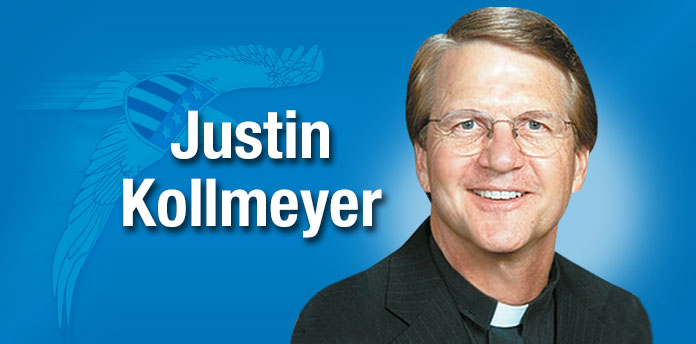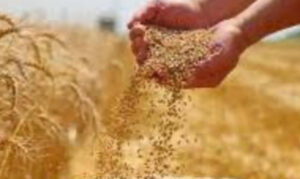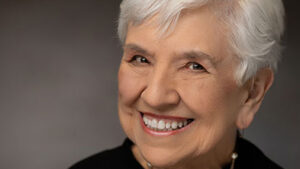Many families with kids in school will be heading out next week for a Spring Break trip. We did that several times when our kids were at that stage. We had a blast. If that’s you this year, go and have a blast, too.
However, another spring ritual for us was always, and is still, to honor and attend all the wonderful special church services of Holy Week and Easter. The great thing about this year’s school schedule is that Spring Break and Holy Week do not coincide and interfere with each other.
For Christians, Holy Week and Easter are the most sacred days of the year. As you may know, these days recall and re-live the last days in the earthly life of Jesus.
The week begins with Palm Sunday, which remembers the triumphal entry into Jerusalem by Jesus. He came into the capital city riding on a donkey, which was a quite humble way for a dignitary to enter, of course. Even still, as He rode into Jerusalem, the crowds gathered in excitement and declared Him to be King, in line with the great King David.
That day the people shouted “Hosanna!” which was a declaration of joy and celebration and victory. All of this is recorded in the accounts of the Bible. The people also took palm branches from the trees and waved them as a way to add joy and honor and celebration worthy of a king.
In our churches on Palm Sunday we read again that story from the Bible, and we note that great event by also waving palm branches and shouting aloud, “Hosanna! Hosanna! Blessed is He who comes in the name of the Lord! Hosanna in the highest!” We acknowledge that Jesus is our King.
Some churches even use the latter part of that Sunday service to begin pondering what happened to Jesus later in that week by reading about his passion, that is, his suffering and death on the cross on Friday. I’ll come back to that day below.
All the days of Holy Week are Holy Days, but the next significant day is Thursday, which we call Maundy Thursday. We call it “maundy” because that word comes from the Latin word meaning “mandate.” It was on that Thursday night that Jesus ate the Last Supper with His disciples.
At that Last Supper, Jesus gave two great mandates. First of all, He washed His disciples feet, which was quite unusual for a “master” to wash his disciples’ feet. Then, after washing, He commanded His disciples, “Love others as I have loved you.” That command still holds for us today as Jesus’ disciples.
Also at that Last Supper, Jesus took the bread and wine of the Passover Meal, blessed them, and gave them to His disciples. He declared to them that these were now His body and blood to be the sacrifice for all sin. His second command was for the disciples then and now to continue to use and bless bread and wine, eating and drinking, and remembering that these are truly the body and blood of Jesus for the forgiveness of all our sins.
In our Maundy Thursday church service we remember the foot washing, with some churches having actual foot washings. We also receive the Holy Communion, which is the bread and wine, the body and blood of Christ, for the forgiveness of our sins and the strengthening of our faith.
Later that same night of the Last Supper, Jesus was betrayed by Judas, arrested, and taken through a long series of mock trials and physical abuse by the Roman authorities, which brings us to Good Friday.
Yes, we call it Good Friday. It was terrible for Jesus, but we declare that it was so good for us. On that day Jesus was crucified on the cross on a hill outside of Jerusalem. God tells us in Holy Scripture that it was that death of the totally innocent Jesus which became the last and final sacrifice for the forgiveness of all the sin of the whole world. We now humbly receive that forgiveness in faith and thankfulness by the power of the Holy Spirit.
The worship service that day or evening of Good Friday is the most solemn service of the entire year. We humbly and thankfully remember how much Jesus loves us and what He did for us by dying on that cross. Various forms of worship are used by different churches, but they all convey that same important message.
However, that solemn mood shifts to the exact opposite on Easter Sunday morning when we declare and celebrate with great joy that Jesus did not stay dead in His tomb, but rose again. “He is risen! He is risen indeed! Alleluia!” He came back to life, stayed on the earth for forty more days showing His risen body to His disciples and many others, then ascended into heaven and sits at the right hand of the Father, and He will come again to bring His full kingdom into eternal existence. This is the eternal and absolute truth.
Our Easter worship services are full of light, Easter lilies, joyous music, joyful worshippers both members and guests, and the message of Jesus Christ, crucified and risen, who brings hope and life to all the world.
O.K. Be intentional about your Spring Break trip. But be equally, if not more intentional about giving yourself over to the blessings, even eternal blessings, of Holy Week and Easter. Go to your church for these special days, or if you do not have a church home right now, find one that will give you what God wants you to have, His story, His Good News, His way of life, which is the best way of life!
Amen!
[Kollmeyer, a Fayette County resident for 36 years, is Pastor Emeritus at Prince of Peace Lutheran Church in Fayetteville. Follow Pastor Scott Ness and this great church at www.princeofpeacefayette.org. Kollmeyer was most recently Interim Pastor at Word of God Lutheran Church in Sharpsburg. Follow Pastor Jason Dampier and this great church at www.woglutheran.org.]












Leave a Comment
You must be logged in to post a comment.